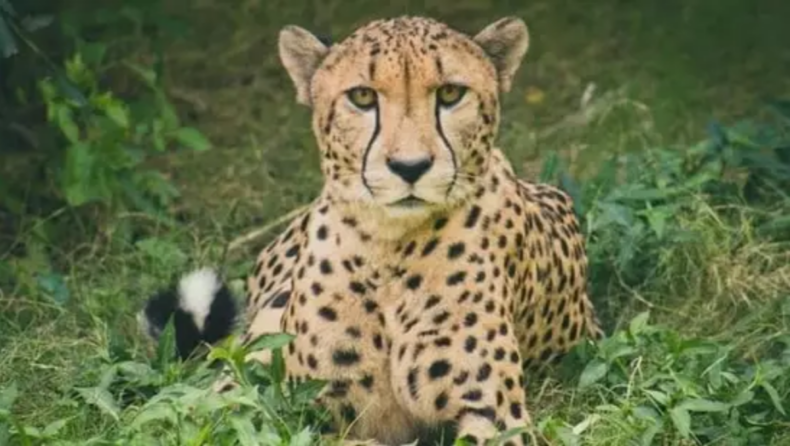70 years after the cheetah’s extinction, the Indian Government is planning cheetah’s comeback to Kuno Wildlife Sanctuary.
On Wednesday, a memorandum of agreement was signed by Namibia and India to reestablish the African cheetah in India (MoU). Additionally, cooperation on wildlife conservation and sustainable biodiversity exploitation is a key component of the Memorandum of Understanding (MoU) that Union Minister for Environment, Forests, and Climate Change (MoEF) Bhupender Yadav and Namibia’s Deputy Prime Minister and Foreign Minister Netumbo Nandi-Ndaitwah signed in New Delhi.
The Asiatic cheetah, a highly endangered species that only exists in Iran, was officially declared extinct in India in 1952. Although the cheetah was known to exist in India in 1947, Maharaja Ramanuj Pratab Singh Deo of Surguja state shot the three males that were still living in what is now Guru Ghasidas National Park in Chhattisgarh.
What strategy does the government have to introduce cheetahs to India?
The Indian government has been working to bring back cheetahs to India since the 1960s and 1970s, but in the past ten years, these initiatives have gained more momentum.As the only country had a surviving population of the species at the time, the government made an effort to import cheetahs from Iran. Tehran, though, had gotten worse in part because of the species’ extremely low population numbers—all of which were in the wild..
The project was advertised as reintroducing “the only large mammal to have gone extinct in India” while Jairam Ramesh was the environment minister in September 2009, which helped the plans get support. There were rumors that the cheetahs might arrive at that time from the Cheetah Conservation Fund (CCF) in Namibia or from other South African captive institutions.
What were the obstacles to this plan’s approval?
At the same time as these developments, the government’s Asiatic Lion Reintroduction Project, a project that aims to return the last wild population of the Asiatic lion found in Gujarat’s Gir Forest National Park, was also under process. An effort to establish a new population of Asiatic lions was conducted at the Kuno Wildlife Sanctuary in Madhya Pradesh. But the Gujarat state administration fiercely opposed the intended transfer for a number of reasons, one of which was that the lions were symbols of the state.
When the dispute made it to the Supreme Court, it was derailed in April 2013. The Supreme Court of India stated in its ruling that the MoEF’s choice to introduce African cheetahs to Kuno first and then Asiatic lions afterwards was “at this stage, in our view, arbitrary and illegal and clearly in breach of the legislative provisions stipulated under the Wildlife Protection Act.” The MoEF’s directive to bring African cheetahs to Kuno is revoked since it is unconstitutional in the eyes of the law. The highest court’s concerns about using an alien species while ignoring the needs of native species were one of the grounds for quashing..
However, the Indian government remained adamant about continuing with its plan. In order to restore cheetahs into Kuno, the government’s National Tiger Conservation Authority petitioned the court in 2016 with a review request. The government stated that the cheetahs would aid in the preservation of other species, such as those of the grasslands, in the sanctuary. The court cases provided some insight into the government’s objectives, which included the potential relocation of African Cheetahs to other national parks and reserves across the nation.
What are challenges of the idea?
The government’s justifications for this project, particularly from a conservation standpoint, are not convincing, according to wildlife biologist and conservation expert Ravi Chellam. He cites a government objective “that permits the cheetah to perform its functional job as a top predator” as an example..
“Even based on their best projections, only 21 cheetahs at most are anticipated in the next 15 years, which is a very lengthy time. They are not numerous enough to have a significant impact. More importantly, Asiatic lions are undoubtedly higher up the food chain since they are a top predator. They would perform the ecological job far better, and it would also guarantee their relocation to Kuno and allow for compliance with the Supreme Court’s 2013 decree.” Chellam said
One of the government’s stated goals is to “use the cheetah as a charismatic flagship and umbrella species to garner resources for restoring open forest and savanna systems that will benefit biodiversity and ecosystem services from these ecosystems,” which has drawn particular criticism from wildlife experts and conservationists.













